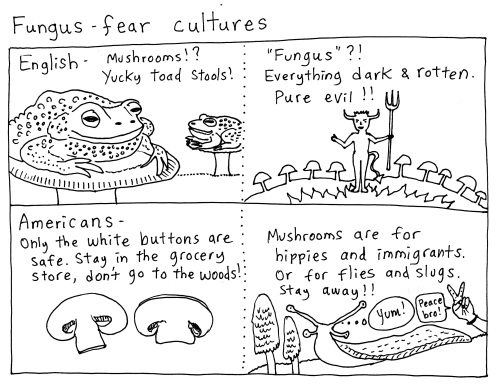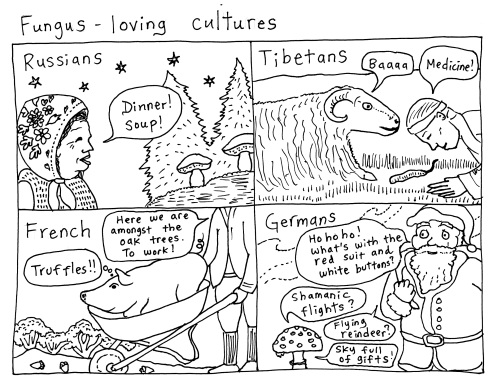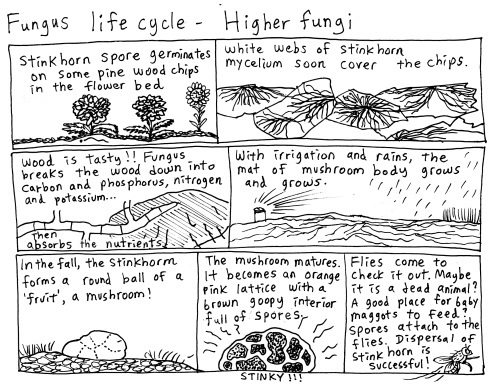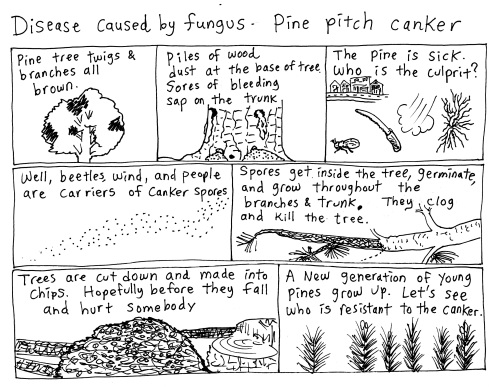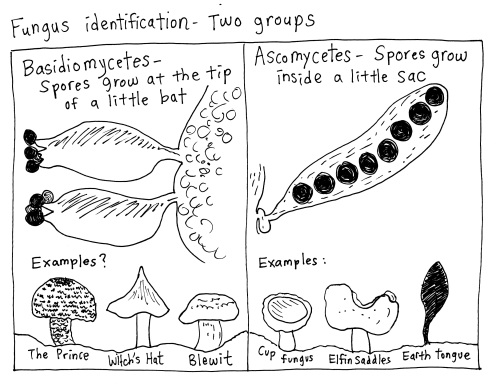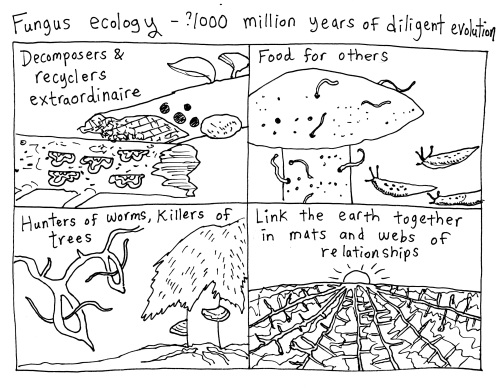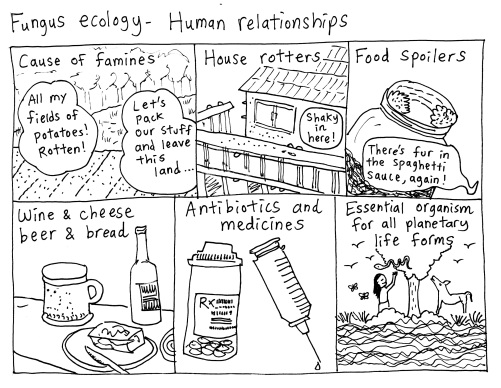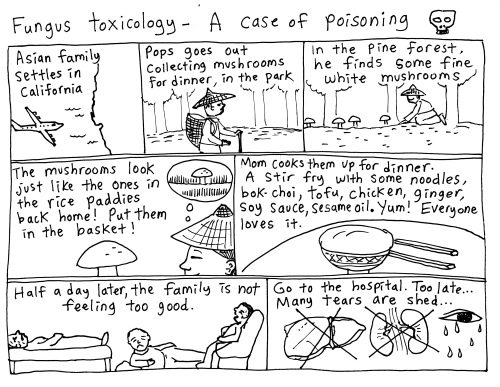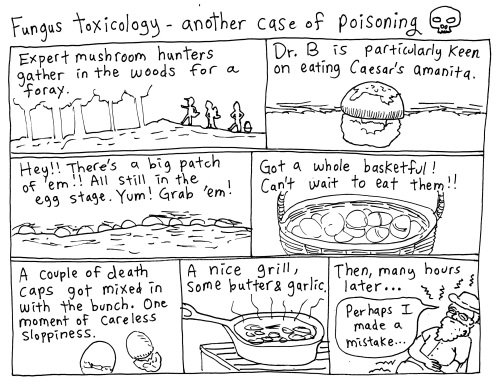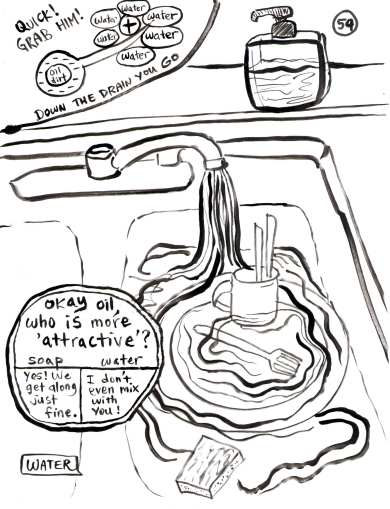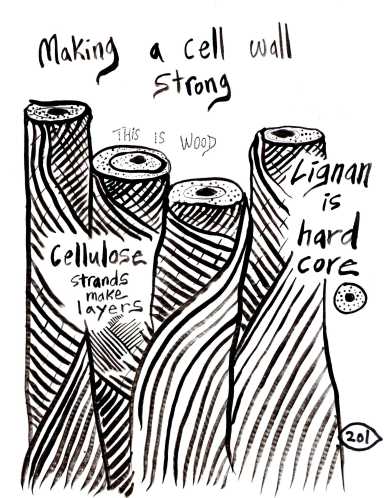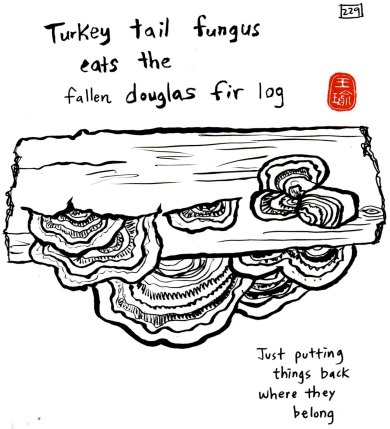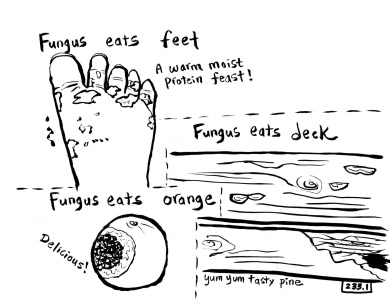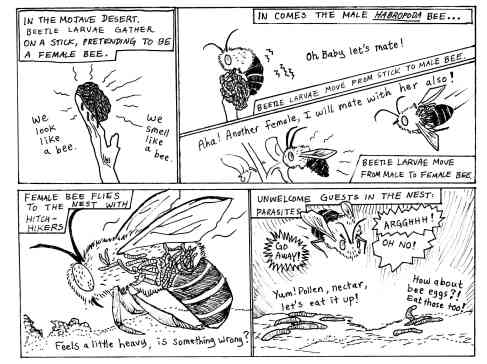Any chance to play with water I am there! So washing dishes comes easily to me. Restaurant, home, or camp site – they are all good places to do some chores. Luckily there is the magical stuff called soap, otherwise the greasy film on the pots and pans would drive me nuts! The plastic forks and tupperware containers, boy they really hold on tight to the oils.
The water molecules gather around the tail of the sodium or potassium part of the soap, and keep the soap molecule suspended in the water. Meanwhile, the other end of the soap molecule grabs onto oils and dirt. Soap helps make an emulsion – a mix of two liquids that do not usually blend together. Then it’s off they go to the sewers, treatment plant, bays and oceans.
Another day I was working in the garden, cutting tree branches. Saw dust was flying in my eyes, the saw teeth were trying to jump on my arms, and the weight of the branch was starting to pinch. What is this stuff that is so strong? When I understood, I drew this picture. It is all in the structure. Wood shares some similarities with rebar and concrete, bones and muscles, wood frames and drywall.
There are organisms that like to eat wood and break it down into tasty morsels. Fungi! Some are picky eaters, and they only relish the brown lignin cores. They are called white rotters because they leave a bunch of stringy white fibers after their feasting. Here is one of them:
Fungi comes in many forms and colors, and can be found everywhere. Fungi loves moisture. Nature’s house cleaners take care of the dead, and sometimes parasitize the living. The dry rot that eats my deck is a brown rotter. It will slowly eat the cellulose (and hemicellulose) until the deck crumbles into little brown cubes. Arrgggghhh! Should have used redwood….
Here is a story about parasites in the Mojave desert. There are beetle larvae that take up residence in bee nests. It is a little disturbing, but still suitable for younger audiences.
